Novo’s once-weekly insulin rejected by FDA by Kristin Jensen for BioPharmaDive.com, 11 July 2024.
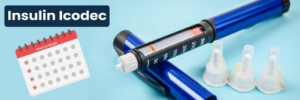 Novo is one of the world’s premier manufacturers, along with Indianapolis-based Eli Lilly. Both have been working for years to offer patients a more convenient option than the once-daily injections of insulin that many diabetics require.
Novo is one of the world’s premier manufacturers, along with Indianapolis-based Eli Lilly. Both have been working for years to offer patients a more convenient option than the once-daily injections of insulin that many diabetics require.
Lilly in May announced positive Phase 3 results for its once-weekly insulin, called efsitora alfa. Novo has already won approval in the European Union, Canada, Australia, Japan, and Switzerland to sell icodec under the brand name Awiqli for both Type 1 and Type 2 diabetes. The medicine is also approved in China for Type 2 diabetes.
However, an FDA advisory panel in May expressed concerns about the potential for icodec to trigger a higher risk of hypoglycemia that would require more patient monitoring in type 1 diabetics.
Read more: Novo’s once-weekly insulin rejected by FDA
Is It Safe to Use Stevia? by Risa Kerslake for NextAvenue.org, 4 June 2024.
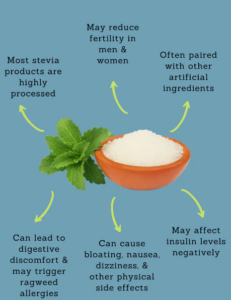 Stevia is a sugar substitute similar to artificial sweeteners because it doesn’t raise your blood sugar, according to Claire Rifkin, RDN, a NYC-based private practice dietitian. It’s about 200 to 300 times sweeter than table sugar. Unlike other sweeteners, it comes from a plant. Besides eating the stevia leaves themselves, there’s also the highly processed version you see in stores known as steviol glycosides. Stevia is used to flavor products you see in stores, but you can also use it to replace sugar in your drinks and baked goods.
Stevia is a sugar substitute similar to artificial sweeteners because it doesn’t raise your blood sugar, according to Claire Rifkin, RDN, a NYC-based private practice dietitian. It’s about 200 to 300 times sweeter than table sugar. Unlike other sweeteners, it comes from a plant. Besides eating the stevia leaves themselves, there’s also the highly processed version you see in stores known as steviol glycosides. Stevia is used to flavor products you see in stores, but you can also use it to replace sugar in your drinks and baked goods.
According to the Cleveland Clinic, when you eat sugar, your brain releases dopamine, the feel-good chemical, similar to when someone smokes cigarettes. Eating sugar stimulates certain areas of the brain affected by addiction. Artificial sweeteners do the same thing, except that because they’re so much sweeter than sugar, your nervous system becomes overloaded with dopamine. As Melissa Young, MD, states in the article, your body starts craving artificial sweeteners. “And it can be easier to give in to that craving because you think you’re making a healthier choice.”
“I would not recommend consuming whole stevia leaves even if you grow them in your garden,” says Rifkin. You might be just fine, but you also might not be and that’s simply because there’s not enough research to tell us otherwise. The whole-leaf version of stevia isn’t FDA-approved for use as a sweetener.
Because of concerns about it causing cancer, stevia was banned by the FDA in 1991. In 2008, the FDA revised its stance and granted high-purity stevia extracts as “generally recognized as safe” (GRAS). The same isn’t true of whole-leaf stevia.
With the highly processed stevia, there are still precautions. According to Rifkin, stevia can cause some people to have GI symptoms, such as diarrhea, upset stomach and bloating.There’s also such a thing as consuming too much stevia. The acceptable amount defined by the World Health Organization is 4 mg per kilogram of body weight. For a 150-pound person, that’s eating 10 packets of stevia daily.
Read more: Is It Safe to Use Stevia?
What about how artificial sweeteners impact our environment?Study reveals environmental impact of artificial sweeteners by Megan Winslow for Phys.org, 8 July 2024.
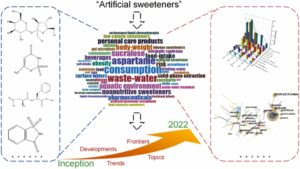 The human body’s inability to break down sucralose, an artificial sweetener found in many zero-calorie food and drink products, is well established by scientific research. The compound is so stable that it escapes wastewater treatment processing and is in drinking water and aquatic environments.
The human body’s inability to break down sucralose, an artificial sweetener found in many zero-calorie food and drink products, is well established by scientific research. The compound is so stable that it escapes wastewater treatment processing and is in drinking water and aquatic environments.
“We can’t break down sucralose, and a lot of microorganisms can’t break it down, either, because it’s a really tough molecule that doesn’t degrade easily. So there are a lot of questions about how it is affecting the environment and whether it’s something that could impact our microbial communities,” said Tracey Schafer, an assistant research scientist for the University of Florida’s Whitney Laboratory for Marine Bioscience and the soil, water and ecosystem sciences department, part of UF’s Institute of Food and Agricultural Sciences. Schafer is a co-author of a recently published study demonstrating how sucralose affects the behavior of cyanobacteria—an aquatic photosynthetic bacteria—and diatoms, microscopic algae that account for more than 30% of the primary food production in the marine food chain. The paper is published in the journal Environmental Monitoring and Assessment.
“There is the potential that the freshwater communities might be mistaking sucralose for a nutrient, for a sugar that they can use as food,” said Amelia Westmoreland, the study’s lead author and a scientific researcher who worked on the project while completing her undergraduate degree in chemistry. Both freshwater and brackish diatoms exposed to sucralose displayed an overall decreasing trend in population compared to a control group. The difference between dosed samples and the control group was most profound, however, in the freshwater experiments. Sucralose’s ability to both increase and decrease microbial community populations could potentially threaten a naturally balanced ecosystem, Westmoreland said.
Read more: Study reveals environmental impact of artificial sweeteners
How Moment-to-Moment Changes in Blood Sugar Can Impact Cognitive Function by Laura T. Germine, PhD for BBRFoundation.org, 11 July 2024.
 A research team co-led by a BBRF grantee has shed new light on how changes in blood glucose levels in the body correspond with changes in cognition. Publishing in the journal NPJ Digital Medicine, the team reports on its efforts to do something that new technologies have made possible for the first time: to monitor with great precision how moment-to-moment fluctuations in glucose levels in patients with type I diabetes impact moment-to-moment fluctuations in certain cognitive domains.
A research team co-led by a BBRF grantee has shed new light on how changes in blood glucose levels in the body correspond with changes in cognition. Publishing in the journal NPJ Digital Medicine, the team reports on its efforts to do something that new technologies have made possible for the first time: to monitor with great precision how moment-to-moment fluctuations in glucose levels in patients with type I diabetes impact moment-to-moment fluctuations in certain cognitive domains.
Co-led by 2017 BBRF Young Investigator Laura T. Germine, Ph.D. and Naomi S. Chaytor, Ph.D., of, respectively, McLean Hospital/Harvard Medical School and Washington State University, the team enrolled 200 type 1 diabetes patients, 190 of whom formed the group whose results were analyzed. Zoe Hawks, Ph.D., was the first author of the team’s paper. Type 1 diabetes, characterized by elevated glucose levels and above-normal variability in blood glucose levels over time, is associated with many adverse health outcomes including mild neurocognitive disorder, dementia, and microvascular complications.
The relationship between glucose and insulin levels in the body and brain, on the one hand, and brain function, on the other hand, has been of increasing interest to neuropsychiatric researchers and clinicians in recent years. The brain constitutes only a few percent of the body by weight, yet consumes about one-fourth of its sugar, which supplies its extraordinary “fuel” requirements. Insulin helps move sugar into cells.
The study led by Drs. Germine and Chaytor was made feasible by combining continuous glucose monitoring (CGM) with cognitive ecological momentary assessment (EMA). CGM is used to monitor blood sugar levels in patients frequently, e.g., every 5 minutes. With outputs readable over common devices such as cellphones, CGM is used to help patients manage their blood sugar levels over the course of a day—what is called by researchers a “naturalistic” context. Cognitive EMA is used in studies in which research subjects are asked to complete very brief cognitive tasks several times a day using smartphone devices. This technology has been shown to accurately assess variations in cognitive skills within single individuals over the course of a day or days, as well as the range of variations between different individuals asked to perform the same cognitive tasks. Both tools came into play in the new study.
People with these risk factors might benefit from “limiting consequential speed-dependent cognitive tasks at moments when glucose is considerably above or below” their typical level. The results support theories suggesting accumulated diabetes-related insults increase cognitive vulnerability to short-term changes in glucose levels.
Read more: How Moment-to-Moment Changes in Blood Sugar Can Impact Cognitive Function
Ypsomed Diabetes Care. What happens next? by Tim Street for Diabettech.com, 8 July 2024.
 Ypsomed has decided to withdraw from the Diabetes business, announcing the split of Ypsomed into two groups: Ypsomed Delivery Systems (YDS) and Ypsomed Diabetes Care (YDC). Until March 2025, YDC will live under the roof of Ypsomed Holdings, while Ypsomed undertake market sounding to get a better understanding of interested parties and the value of the diabetes care business.
Ypsomed has decided to withdraw from the Diabetes business, announcing the split of Ypsomed into two groups: Ypsomed Delivery Systems (YDS) and Ypsomed Diabetes Care (YDC). Until March 2025, YDC will live under the roof of Ypsomed Holdings, while Ypsomed undertake market sounding to get a better understanding of interested parties and the value of the diabetes care business.
The key takeaway from the actions that Ypsomed has taken is that, in the longer term, they plan to focus on the delivery systems aspect of their business. As a result, they’re trying to work out what to do with Diabetes care, and to allow them to do this, they’ve created a separate unit, which allows them to track performance and attribute cost.
The stark reality is that if YDC isn’t profitable, then there’s a problem. The question will become “What will it take to turn to profit?”. If the answer is the volume of sales, then expansion in the US is going to be key to that, and selling on to an industry participant who can help provide a shortcut to this scale would be a good option.
If the answer is to increase prices to cover costs, then it becomes a different perspective. How many existing contracts with insurers and healthcare systems would need to be renegotiated? Would providers continue to offer the products at increased prices? Difficult questions to answer!
Read more: Ypsomed Diabetes Care. What happens next?
Islet Cell Replacement Therapy with Manasi Sinha Jaiman, MD, MPH for TCOYDthePodcast.transistor.fm, 3 July 2024.
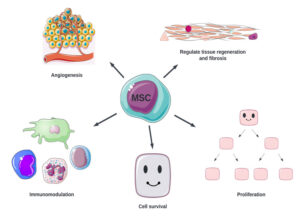 Islet cell replacement therapy represents a promising advancement to cure type 1 diabetes. In this episode of the Taking Control of Your Diabetes podcast, our special guest, Dr. Manasi Jaiman, MD, MPH, a leading pediatric endocrinologist and diabetes researcher, joins hosts Dr. Jeremy Pettus and Dr. Steve Edelman to delve into the intricacies of stem cell research and its potential to transform diabetes treatments. Dr. Manasi Jaiman discusses her journey into diabetes research, the significance of islet and beta cells, and the advancements in programming stem cells for therapeutic purposes. She also explains the current methods for delivering these designed cells to patients, the importance of immunosuppression in cell therapy, and the progress made in encapsulation techniques.
Islet cell replacement therapy represents a promising advancement to cure type 1 diabetes. In this episode of the Taking Control of Your Diabetes podcast, our special guest, Dr. Manasi Jaiman, MD, MPH, a leading pediatric endocrinologist and diabetes researcher, joins hosts Dr. Jeremy Pettus and Dr. Steve Edelman to delve into the intricacies of stem cell research and its potential to transform diabetes treatments. Dr. Manasi Jaiman discusses her journey into diabetes research, the significance of islet and beta cells, and the advancements in programming stem cells for therapeutic purposes. She also explains the current methods for delivering these designed cells to patients, the importance of immunosuppression in cell therapy, and the progress made in encapsulation techniques. Read more: Islet Cell Replacement Therapy
Federal Trade Commission to sue three largest PBMs by Rebecca Pifer for HealthCareDive.com, 10 July 2024.
 The Federal Trade Commission is preparing to sue the three largest pharmacy benefit managers in the U.S. — CVS’ Caremark, Cigna’s Express Scripts and UnitedHealth’s Optum Rx — over how they negotiate prices for drugs with pharmaceutical manufacturers, as reported by the Wall Street Journal reported on Wednesday. The lawsuits will center on PBMs’ business practices related to discounts for drugs including insulin, the WSJ reported, citing sources familiar with the matter.
The Federal Trade Commission is preparing to sue the three largest pharmacy benefit managers in the U.S. — CVS’ Caremark, Cigna’s Express Scripts and UnitedHealth’s Optum Rx — over how they negotiate prices for drugs with pharmaceutical manufacturers, as reported by the Wall Street Journal reported on Wednesday. The lawsuits will center on PBMs’ business practices related to discounts for drugs including insulin, the WSJ reported, citing sources familiar with the matter.
News of the upcoming suits comes one day after the FTC released an interim report on the status of its almost three-year investigation into the drug middlemen. The report found PBMs lean on their market power to profit off of patients and independent pharmacists.
Pressure has been rising on Washington to do something to curb drug prices, which caused almost one in three Americans to delay or skip doses of their medication last year, according to a survey. The FTC is one of a handful of government entities currently investigating PBMs.
Read more: Federal Trade Commission to sue three largest PBMs
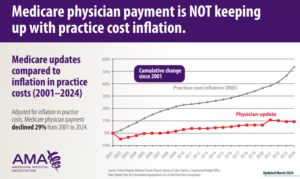 Physicians are facing a 2.8% cut in pay under the proposed 2025 Medicare physician payment schedule published today. The proposal from the Centers for Medicare & Medicaid Services (CMS) reinforces the clear need for systemic changes and follows a 1.69% Medicare pay cut in 2024 and 2% drop in 2023.
Physicians are facing a 2.8% cut in pay under the proposed 2025 Medicare physician payment schedule published today. The proposal from the Centers for Medicare & Medicaid Services (CMS) reinforces the clear need for systemic changes and follows a 1.69% Medicare pay cut in 2024 and 2% drop in 2023.
“With CMS estimating a fifth consecutive year of Medicare payment reductions—this time by 2.8%—it’s evident that Congress must solve this problem,” said AMA President Bruce A. Scott, MD. “In addition to the cut, CMS predicts that the Medicare Economic Index [MEI]—the measure of practice-cost inflation—will increase by 3.6%. Facing this widening gap between what Medicare pays physicians and the cost of delivering quality care to patients, physicians are urging Congress to pass a reform package that would permanently strengthen Medicare.”
Why it’s important: “Physician practices cannot continue to absorb rising costs while their payment rates dwindle,” Dr. Scott said. “The death by a thousand cuts continues. Rural physicians and those treating underserved populations see this CMS warning as another reminder of the painful challenges they face in keeping their practices open and providing care. It’s crucial that we ensure both continue.”
Medicare physician payment effectively declined 29% from 2001 to 2024, even before accounting for the newly proposed cut. It’s widely acknowledged by experts that chronically inadequate Medicare payment rates will eventually take a toll on older adults’ access to high-quality care.
There is already a severe shortage of endocrinologists in the US. This is a terrible situation as T1Ds look for physicians, particularly in rural areas.
Read more: Latest proposed cut—2.8%—shows need for Medicare pay reform



Medicare pay reform is long over due. The two special doctors classes are woefully underpaid. Endocrinologists and rheumatologists. Both deserve better. Much better !!
Suing PBM’s? Where do I sign up at.